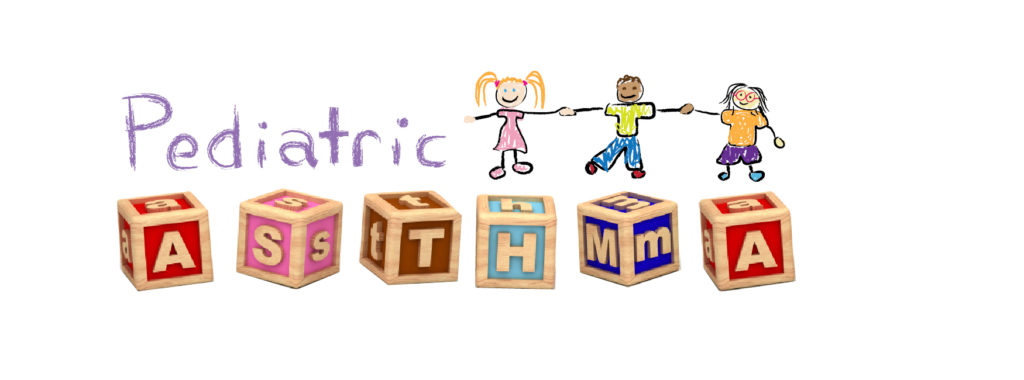Pediatric Asthma: Why is Your Child Wheezing?
Although asthma is a common disease, it is not always recognized that pediatric asthma has become the most common chronic disease of childhood. Symptoms of wheezing, coughing and/or shortness of breath are indeed common among infants and children. While these symptoms, when caused by asthma, usually respond well to appropriate medications, the exact diagnosis is not always obvious early in the evaluation of such patients.
Children who have uncontrolled asthma account for an estimate 5% of all children with asthma. Usually children with uncontrolled pediatric asthma:
-
have a greater chance of having allergies
-
are more likely to be adolescent boys
-
are less often associated with having obesity than other forms of asthma
Children with uncontrolled asthma, by definition, have not met the goals of asthma therapy which include reducing current and future problems.
Goals for Treating Asthma in Kids
For kids with uncontrolled asthma, The Asthma Center has several treatment goals to reach optimal asthma control:
A) Focus on current problems (impairment) of pediatric asthma which include:
-
Preventing chronic and acute symptoms.
-
Reduce frequent use of short-acting rescue inhalers.
-
Maintain near normal pulmonary function test.
-
Maintain normal activity levels including exercise and attendance at school or work.
-
Meet the individual’s expectation and satisfaction with their overall asthma treatment.
B) Focus on future risks of pediatric asthma which include:
-
Prevent recurrent exacerbations that require increased medication, oftentimes oral steroids, and minimize the need for emergency room visitation and/or hospitalization.
-
Prevent progressive loss of lung function and for children to prevent the chance of decrease in lung growth and bone growth.
-
Provide optimal treatment with minimal side effects or no side effects.
One recognized issue for difficult to treat asthma is whether the child is actually adhering to medication use and using their medication properly. A child would need to use at least 80% of their inhaled steroid dose to have optimal effects on asthma control to decrease symptoms and improve activity and decrease exacerbations. However, only one-fourth of children actually achieve this level of compliance. In addition, less than one-fourth of children can demonstrate proper use of their inhaler and since by age 11, 50% of the children assume responsibility for administering their asthma medications unsupervised, this leads to further decreased adherence and poor inhaler technique as well.
Testing for Triggers & Common Misdiagnoses for Childhood Asthma
Sometimes uncontrolled asthma is in fact not asthma but due to a variety of conditions that can masquerade or mimic asthma. These conditions need to be investigated and eliminated in any child who is not doing well and/or not responding to asthma treatment. Such conditions include vocal cord dysfunction, panic attacks/hyperventilation syndrome, anatomic abnormalities in the lungs such as tracheobronchomalacia, cystic fibrosis, bronchiolitis obliterans, interstitial lung disease, auto-immune disorders, immunologic disorders, foreign body in the lungs (example: inhaling a piece of food), congenital heart disease, and chronic aspiration syndromes. Consequently, The Asthma Center has a very comprehensive approach in evaluating children with “difficult to control” asthma who are not doing well on his/her current treatment. Such evaluations include testing for objective evidence of asthma based on pulmonary function studies and/or methacholine challenge. To rule out other conditions mimicking asthma, additional studies may be required such as chest x-rays, CT lung scans, GI studies, echocardiogram, and/or blood studies in addition to allergy skin testing.
In many cases of difficult to treat childhood asthma, environmental triggers are important to identify to reduce inciting triggers. This includes identifying potential allergens by allergy skin testing, identifying exposure to second or third hand cigarette smoke or identifying other indoor and outdoor pollutants. It is estimated that 95% of pediatric patients with severe asthma have allergen sensitivity and toxic exposure to pollutants or chemicals which may lead to asthmatic irritation of the airways. Pollutants can be concentrated in living spaces that are poorly ventilated; for example, heat and smoke from fire places and burning stoves as well as some cooking sources can create toxic concentrations of pollutants when ventilation is poor. Smoking exposure has also been associated with asthma exacerbations and it should always be assessed in the family. In addition to the home environments, school environment may also be a source of problems. Several studies have shown that school classroom environment is also a source of significant exposures to allergens like cats, dogs, dust mite, molds, rodents and cockroaches.
Numerous co-existing conditions have been associated with asthma exacerbations making it difficult to keep asthma under control [for instance, recurrent sinus infection and symptomatic gastrointestinal reflux (GERD) ]. Obesity and obstructive sleep apnea with snoring has also been associated with asthma exacerbations.
In addition, appropriate diagnostic testing including pulmonary function studies, methacholine challenges, allergy skin testing, blood assessment, and radiographic assessments, possible sleep studies, and direct visualization of the upper airway by nasopharyngoscopy are required for an appropriate treatment course to be successful as well as strategies to improve adherence and compliance.
Treatment Options for Childhood Asthma
Optimizing conventional therapy like inhaled steroids, long acting bronchodilators, and allergy injections in those people who have truly strong allergic triggers will also often times lead to decreased exacerbations and improve asthma control. As with many chronic conditions, appropriate monitoring is required to maintain optimal results for pediatric asthma. This is especially true for children with persistent moderate to severe asthma. Followup evaluations should be done every 3 months where there is an assessment of the child’s quality of life, their pulmonary function study, their compliance, and their risk of exacerbation.
For extremely difficult to treat cases, there are a variety of new treatment options including a long acting anticholinergic bronchodilator called tiotropium (Spiriva.) This is approved for children 6 years and older and improves lung function and decreases asthma exacerbations. Biologic therapies including omalizumab (Xolair, an anti IgE monoclonal antibody) approved for age 6 years and older, mepolizumab (Nucala) and benralizumab (Fasenra) the latter two approved for 12 years and older, and reslizumab (Cinquair) approved for those 18 years and older. These drugs are very effective in reducing symptoms and in some cases improving pulmonary function study and decreasing exacerbations.
A comprehensive program for controlling pediatric asthma as outlined above is part of The Asthma Center protocol and has been very successful in reducing flares, keeping children out of the hospital and free of complications from medications and avoiding exacerbations.
The Asthma Center Locations Throughout Delaware Valley
Center City Philadelphia • Society Hill Philadelphia • Northeast Philadelphia
Mt. Laurel NJ • Woodbury NJ • Hamilton – Princeton NJ • Forked River NJ













